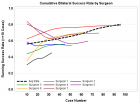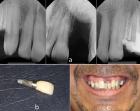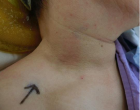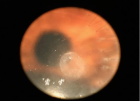Abstract
Research Article
Blockade of the distal sciatic nerve with the patient in the supine position using a newly developed position aid with integrated ultrasound probe holder
Michael Schütz*, Jens Magunia and Hans-Bernd Hopf
Published: 09 July, 2019 | Volume 3 - Issue 1 | Pages: 003-006
Background: We have developed a femoral supporting pad with an integrated ultrasound probe holder and examined its practical usability on patients with lower limb surgery.
Objectives: To evaluate the function of this novel femoral supporting pad with respect to its practicability during the performance of a distal sciatic nerve blockade, the time needed to perform this blockade including the catheter insertion and the quality of postoperative analgesia within the first 24 hours.
Methods: 50 patients which had been scheduled for elective lower leg, ankle or foot surgery had received a continuous blockade of the distal sciatic nerve. Sciatic nerve blockade was performed sonographically controlled with the patients in supine position by using our novel femoral supporting pad with an integrated ultrasound probe holder. Primary endpoint: duration of the intervention. Secondary endpoints: pain intensity (visual analogue scale VAS 0-10) at the first postoperative day; cumulative opioid (piritramide) requirement during their stay on the post Anaesthesia care unit (PACU) with vs. without distal sciatic nerve blockade.
Results: 49/50 patients received a distal sciatic catheter, which had been sonographically placed within a mean time (mean ± sd) of 11:30 ± 3:13 minutes. VAS at the first postoperative day was (mean ± sd) 1 ± 2 at rest and 2 ± 2 as maximum. The piritramide requirement during PACU stay (mean ± sd) was 11 ± 8 mg without vs. 3 ± 6 mg with distal sciatic nerve blockade (p< 0.05).
Conclusion: Continuous distal sciatic nerve blockade using a novel femoral supporting pad with an integrated ultrasound probe holder was feasible in 49 of 50 patients within 11 minutes and 30 seconds.
Read Full Article HTML DOI: 10.29328/journal.ijcar.1001012 Cite this Article Read Full Article PDF
Keywords:
Distal sciatic nerve blockade; Ultrasound; Nerve blockade; Postoperative pain management; Patient positioning; Supine; Mount; Cradle; Femoral supporting pad; Sono; Sonographical; Pontinuos
References
- Blunk JA. Ultraschall in der interventionellen Schmerztherapie. Anaesthesist.2013; 62: 931-946.
- Caio X, Zhao X, Xu J, Liu Z, Li Q. Ultrasound-guided technology versus neurostimulation for sciatic nerve block: a Meta-analysis. Int J Clin Exp Med. 2015; 8: 273-280. PubMed: https://www.ncbi.nlm.nih.gov/pubmed/25784997
- Cappelleri G, Ambrosoli AL, Gemma M, Cedrati VLE, Bizzarri F, et al. Intraneural ultrasound-guided sciatic nerve block. Anesthesiology. 2018; 129: 241-248. Pubmed: https://www.ncbi.nlm.nih.gov/pubmed/29762181
- Kienecker K. Kontinuierliche periphere Nervenblockade: Effektivere Maßnahmen zur postoperativen Schmerztherapie als die systemische Analgesie? Anaesthesist 2007; 56: 398-400.
- Sala Blanch X, López AM, Carazo J, Hadzic A, Carrera A, et al. Intraneural injection during nerve stimulator-guided sciatic nerve block at the popliteal fossa. Br J Anaesth. 2009; 102: 855-61. PubMed: https://www.ncbi.nlm.nih.gov/pubmed/19420006
- Danelli G, Fanelli A, Ghisi D, Moschini E, Rossi M, et al. Ultrasound vs nerve stimulation multiple injection technique for posterior popliteal sciatic nerve block. Anaesthesia. 2009; 64: 638-642. PubMed: https://www.ncbi.nlm.nih.gov/pubmed/19453318
- Guntz E, Herman P, Debizet E, Delhaye D, Coulic V, et al. Sciatic nerve block in the popliteal fossa: description of a new medial approach. J Can Anesth. 2004; 51: 817-82. PubMed: https://www.ncbi.nlm.nih.gov/pubmed/15470171
- Hadzic A, Vloka JD. A comparison of the posterior versus lateral approaches to the block of the sciatic nerve in the popliteal fossa. Anesthesiology. 1998; 88: 1480-6. PubMed: https://www.ncbi.nlm.nih.gov/pubmed/9637640
- Mariano ER, Loland VJ, Sandhu NS, Bishop M, Lee D, et al. Comparative efficacy of ultrasound-guided and stimulating popliteal-sciatic perineural catheters for postoperative analgesia. J Can Anesth. 2010; 57: 919-926. PubMed: https://www.ncbi.nlm.nih.gov/pubmed/20700680
- Neuburger M, Schwemmer U, Volk T, Gogarten W, Kessler P, et al. Lokalisation peripherer Nerven. Anaesthesist. 2014; 63: 422-428.
- Osaka Y, Kashiwagi M, Nagatsuka Y, Miwa S. Ultrasound-guided medial mid-thigh approach to sciatic nerve block with a patient in a supine position. J Anesth. 2011; 25: 621-624. PubMed: https://www.ncbi.nlm.nih.gov/pmc/articles/PMC3152704/
- Cataldo R, Carassiti M, Costa F, Martuscelli M, Benedetto M, et al. Starting with ultrasonography decreases popliteal block performance time in inexperienced hands. BMC Anesthesiol 2012; 12: 33. PubMed: https://www.ncbi.nlm.nih.gov/pubmed/23253617
- Van Geffen GJ, Van den Broek E, Braak GJJ, Giele JP, Gielen MJ, et al. A prospective randomised controlled trial of ultrasound guided versus nerve stimulation guided distal sciatic nerve block at the popliteal fossa. Anaesth Intensive Care 2009; 37: 32-37. PubMed: https://www.ncbi.nlm.nih.gov/pubmed/19157343
Figures:
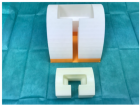
Figure 1
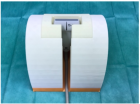
Figure 2
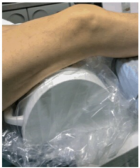
Figure 3
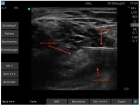
Figure 4
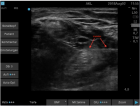
Figure 5
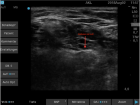
Figure 6

Figure 7
Similar Articles
-
Blockade of the distal sciatic nerve with the patient in the supine position using a newly developed position aid with integrated ultrasound probe holderMichael Schütz*,Jens Magunia,Hans-Bernd Hopf. Blockade of the distal sciatic nerve with the patient in the supine position using a newly developed position aid with integrated ultrasound probe holder. . 2019 doi: 10.29328/journal.ijcar.1001012; 3: 003-006
Recently Viewed
-
The Impact of Forensic Science on the Legal System in IndiaSrishti*. The Impact of Forensic Science on the Legal System in India. J Forensic Sci Res. 2025: doi: 10.29328/journal.jfsr.1001072; 9: 001-006
-
Assessment of Indigenous Knowledge on Using of Traditional Medicinal Plants to Cure Human Diseases in South Omo Zone Baka Dawla Ari District, Kure and Bitsmal South EthiopiaGizaw Bejigo*. Assessment of Indigenous Knowledge on Using of Traditional Medicinal Plants to Cure Human Diseases in South Omo Zone Baka Dawla Ari District, Kure and Bitsmal South Ethiopia. J Plant Sci Phytopathol. 2024: doi: 10.29328/journal.jpsp.1001132; 8: 048-054
-
Bicytopenia Revealing an Intramedullary Spinal Cord Metastatic Prostatic CarcinomaMehdi Marrak*, Abdallah Chaachou, Houssem Hedhli, Nizar Cherni, Mohamed Dridi, Samir Ghozzi. Bicytopenia Revealing an Intramedullary Spinal Cord Metastatic Prostatic Carcinoma. Arch Case Rep. 2024: doi: 10.29328/journal.acr.1001096; 8: 058-059
-
Reduced Pain Scores during Indocyanine Green Lymphography by using a Different Preparation FormulaJingjing Wen,Zhegang Zhou*,Abdelhakim Ezzat Marei,Longbiao Yu,Fanbin Meng,Lifang Duan,Yingfeng Xiao,Hui Zeng,Shengxiang Wan. Reduced Pain Scores during Indocyanine Green Lymphography by using a Different Preparation Formula. J Radiol Oncol. 2025: doi: 10.29328/journal.jro.1001078; 9: 041-045
-
Analysing Average Glandular Dose: A Comprehensive Study Comparing Digital Breast Tomosynthesis with Full-Field Digital Mammography in OmanNaema Al-Maymani*,Raya Al-Mamari,Subhash Kheruka,Amna Al-Jabri,Noura Al-Makhmari,Sana Al-Rashdi,Huoda Al-Saidi,Anas Al-Balushi,Rashid Al-Sukaiti. Analysing Average Glandular Dose: A Comprehensive Study Comparing Digital Breast Tomosynthesis with Full-Field Digital Mammography in Oman. J Radiol Oncol. 2025: doi: 10.29328/journal.jro.1001077; 9: 031-040
Most Viewed
-
Evaluation of Biostimulants Based on Recovered Protein Hydrolysates from Animal By-products as Plant Growth EnhancersH Pérez-Aguilar*, M Lacruz-Asaro, F Arán-Ais. Evaluation of Biostimulants Based on Recovered Protein Hydrolysates from Animal By-products as Plant Growth Enhancers. J Plant Sci Phytopathol. 2023 doi: 10.29328/journal.jpsp.1001104; 7: 042-047
-
Sinonasal Myxoma Extending into the Orbit in a 4-Year Old: A Case PresentationJulian A Purrinos*, Ramzi Younis. Sinonasal Myxoma Extending into the Orbit in a 4-Year Old: A Case Presentation. Arch Case Rep. 2024 doi: 10.29328/journal.acr.1001099; 8: 075-077
-
Feasibility study of magnetic sensing for detecting single-neuron action potentialsDenis Tonini,Kai Wu,Renata Saha,Jian-Ping Wang*. Feasibility study of magnetic sensing for detecting single-neuron action potentials. Ann Biomed Sci Eng. 2022 doi: 10.29328/journal.abse.1001018; 6: 019-029
-
Pediatric Dysgerminoma: Unveiling a Rare Ovarian TumorFaten Limaiem*, Khalil Saffar, Ahmed Halouani. Pediatric Dysgerminoma: Unveiling a Rare Ovarian Tumor. Arch Case Rep. 2024 doi: 10.29328/journal.acr.1001087; 8: 010-013
-
Physical activity can change the physiological and psychological circumstances during COVID-19 pandemic: A narrative reviewKhashayar Maroufi*. Physical activity can change the physiological and psychological circumstances during COVID-19 pandemic: A narrative review. J Sports Med Ther. 2021 doi: 10.29328/journal.jsmt.1001051; 6: 001-007

HSPI: We're glad you're here. Please click "create a new Query" if you are a new visitor to our website and need further information from us.
If you are already a member of our network and need to keep track of any developments regarding a question you have already submitted, click "take me to my Query."






